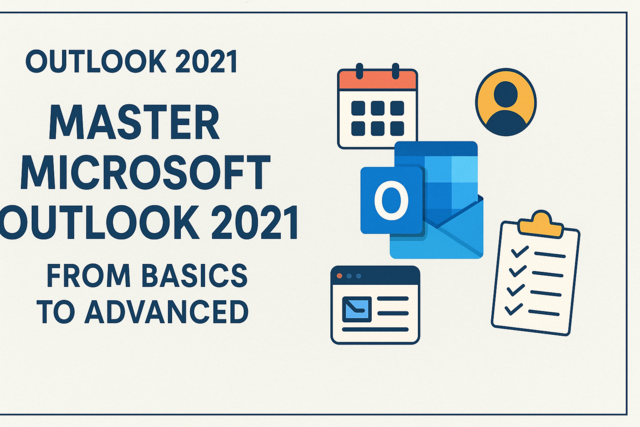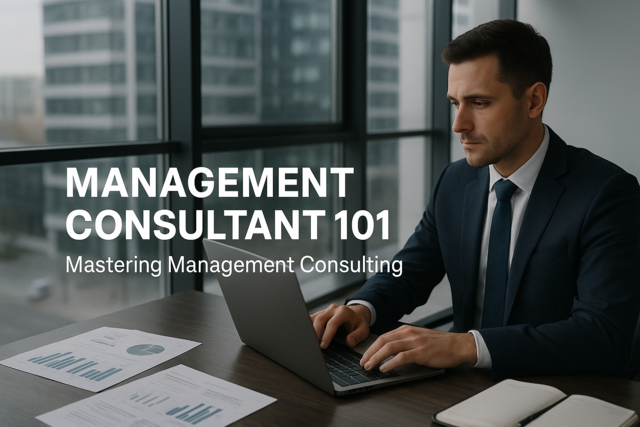In general, feedback will begin with effective communication. There are many benefits to communicating with employees including the reduced risk of miscommunication or faulty assumptions made by either party. Effective communication minimizes the exposure to undesirable work behaviors that reduces the ability for these to develop further into habits. The employer is able to establish strategic direction and expectations through continual feedback. The employee is empowered when two-way communication is implemented which usually improves the quality of work delivered.
There are multiple consequences if feedback delivery results in poor communication. Employees will find it difficult delivering quality assignments if expectations are not understood. When miscommunication occurs because of poorly implemented feedback, one or both parties can develop more personalized feelings of being "wronged." This inherently leads to a bias that paints feedback in the context of a winner or loser. If the employee feels like they cannot "win" nor do not have a voice, then they could be tempted to placate the employer by telling them what they want to hear. Likewise, the employer may disengage and filter information they provide if they start feeling as if they are on the losing end. Tainted perceptions of feedback could induce a toxic environment leading to increased turnover or increased use of leave. This does not just stop at the employer/employee relationship. Employees on the team communicate and poorly provided feedback could affect the entire team's performance or perception of the department. If rumors about the issues leave the confines of the company, the reputation of the organization could be adversely effected.
What is the best way to deliver feedback to employees considering all that is at stake if it is provided ineffectively? This course will provide you with the tools to provide both positive and negative feedback while remaining professional.
Positive Feedback
Most people are comfortable with providing positive feedback. It is easy to cheer on a colleague, friend or employee when there is agreement. Positive feedback can be verbal or connected with a reward.
Techniques for Providing Positive Feedback
There are numerous techniques for providing positive feedback depending on the circumstances. First, the feedback should be given as soon to the occurrence of the event as possible. This way it is fresh on everybody's mind before moving on to the next project. This encourages the action to be repeated in the future. Feedback can be in the form of a verbal affirmation, email expressing support or gratitude or connected with a specific reward tied to the performance.
Examples verbal positive feedback includes:
"Wow. You completed that project ahead of schedule!"
"Good catch by automatically incorporating the missing information into the report."
"That is awesome how you responded to the kids pushing your buttons."
Examples of positive feedback as rewards include:
- Taking the employee out to lunch.
- Awarding the employee with additional leave or time off work.
- Providing a pay raise or promotion.
- Providing a certificate of achievement
- Awarding more challenging work or assignments with greater visibility.
While giving positive feedback publically is usually the preferred method, one has to be careful of the pitfall of focusing on one employee that could upset the dynamics of your team. If one member of your team is performing exceptionally, consider placing them in a team lead or mentor role. If jealousy starts to become an issue or if the dynamic is devolving even after ensuring you are not singling out one employee, then negative feedback will need to be implemented to get everybody back on track. Follow through on the positive feedback by keeping a record of the occurrence. Use this for the employee's performance evaluation. Showing that you have taken an interest in their achievements translates into showing appreciation and respect for your employee. The remainder of this course will focus on negative feedback since positive feedback is easier to recognize, give and receive.
Negative Feedback
Give negative feedback to cause a change in behavior. Use two-way communication because it is based on different perceptions of the same event. Either the employee or employer could be making assumptions. Negative feedback can be formal or informal and the most common methods for delivery are verbal, written or procedural. It is common to have a certain amount of anxiety about delivering negative feedback. With proper preparation and delivery, it can be a very constructive method to bringing out the best in your employees.
When is negative feedback necessary?
The purpose of negative feedback is to change undesirable behavior by redirecting efforts towards implementing the corrective action. Some examples of undesirable behavior or actions are:
- Attitude during a meeting.
- Missed deadlines.
- Reduced quality of work.
- Reliability issues.
Determine the relevance and scale for the negative feedback. Was it a one-time issue, minor scale or larger scale? An example of a minor scale action could be an employee providing good work but slightly late. Another example is providing acceptable work but not exceptional work. A large-scale example would be failing to deliver an assignment, refusal of work or poor quality. It is possible for an unresolved minor scale issues to grow into a large-scale issue. Generally, one-time issues can be resolved with informal techniques whereas large-scale issues require formal techniques.
If a fatal flaw incident occurs such as violence or ability for the employee to cause irreparable harm, then formal techniques must be used in accordance with your human resources policies and procedures in place at your organization. Refrain from providing negative feedback in a public setting.
Techniques for Providing Negative Feedback - Informal
There are many things to consider including timing, preparation and method. Give informal feedback verbally or in a brief meeting.
Preparation is critical for both informal and formal negative feedback. Make sure the issue or concern requires a course correction rather than it was implementation of a different method to complete the assignment. Determine the specifics regarding the issue in order to pinpoint the outcome you are looking for.
Timing is everything. Perform the feedback as close to the occurrence of the event as possible. In an informal setting, this could mean immediately following a meeting where the event occurred, as soon as work has been reviewed or following a late submission of work. Consider workloads and similar circumstances of both yourself and the employee. It is not the appropriate time to meet if everybody is rushing to meet a tight deadline or if you only have 5 minutes before a big meeting. The goal is to find a resolution so rushing through the motions will not necessarily provide the solution you are looking for when perceptions of performance anxiety are high. If schedules are busy or if tensions are high, then schedule a quick meeting within a few days.
The location of the informal feedback sets the tone. As such, consider the location that ensures appropriate privacy and the participants are relaxed for the informal feedback. Most likely this will be in your office or the employees office. However, it could be in a vehicle if you are driving from a meeting where the occurrence occurred. It is recommended to use the employee's office for informal feedback as it reduces tension and the feeling of being called into the principal's office. Virtual methods are possible with a little forethought and with the understanding that the spoken word could get lost in translation without the use of voice inflection or body language. Video teleconferences (VTC) resolve the body language concern and are an option. Webinars tend to work best for instances of work quality since the deliverable in question can be seen by both parties in real time. Phone calls can work but will require greater effort to ask clarifying questions to avoid assumptions by either the employer or the employee.
Remember the goal is to resolve the issue, which requires a two-way communication approach. The employer should approach the employee with the deliverable in question and any notes from the incident. Be direct and honest but not cruel or condescending. Keep in mind that your perception may not be as accurate after discussing the situation in its entirety. The employee may have information that will clarify the facts. The goal is to find a resolution rather than being right. Focus on the behavior or action rather than the employee's personality during the meeting.
Open the discussion by asking the employee how they think they performed at the meeting, deliverable or performance. Actively listen to their response noting body language and speech. Rephrase what you are hearing them say to insure you are both on the same page. The purpose is to understand the employee's perspective. The employee may already agree they behaved poorly and it may have been a one-time incident. If they have self-corrected to ensure the action is not repeated in the future then the issue is resolved.
However, if you do not agree with their response then you need to find out how they reached their conclusion. Explain your perspective of the mistake using documentation to emphasize the outcome you want to see. Then ask the employee if there are some ways to achieve the goal. There are two reasons for asking the employee this question. One is for the employee to become invested and take ownership. The other is the possibility they may come up with a solution previously not considered. If the response meets the goals and is acceptable then the issue is resolved.
Follow through by creating an action plan using the information and outcomes from the meeting. This can be informal through an email if disciplinary action was not sought. Schedule a follow up meeting in a week or month with the employee to ensure everything has been resolved. Take care to provide positive feedback when you see an improvement.
Techniques for Providing Negative Feedback - Formal
Formal techniques are used when the informal techniques did not provide the anticipated results or when a behavior needs to be redirected using a more formal method. Success of providing negative feedback depends on proper timing, preparation and approach considering the reasons behind choosing the formal feedback.
Tremendous care should be taken when choosing the time and location of the formal feedback. It should be far enough out in the future to allow ample time for preparation but as soon as reasonable to provide opportunity for improvement before habits develop. A week or two should be sufficient to set aside time for a formal meeting. Be honest with the employee regarding the purpose of the meeting to discuss concerns you have about their performance. This will provide them time to prepare for the meeting as well. Remember the purpose is to find a resolution.
The location should be a neutral zone such as a conference room that offers privacy. This will increase the focus to determine the root cause of the problem, identifying workable solutions and implementing an action plan.
Determine who needs to attend the meeting. Will this meeting serve as a disciplinary action? Your human resources manual and policies will indicate if another witness should be present. If there is a lot of hostility or mistrust between you and the employee, consider recruiting a neutral third party that can serve as a moderator.
Now that you have decided when and where the meeting will be in addition to who needs to be there, it is time to prepare. Prepare all of your documentation and arrange a time line of actions taken so far to address the behavior. It should be as detailed as possible but objective. Some items to include are:
- Deliverables that can be used as an example
- Date of the events
- Description of the location (e.g. meeting, deliverable name, etc)
- Description of the behavior or action needing improvement, including previous action plans discussed.
- Why it is a concern
- Any previous discussion with the employee to improve the behavior
- Desired outcome
- Period to see improvement and follow up actions (e.g. future meetings, etc)
Ensure that you will not be interrupted during the meeting. In order to convey the importance and need for the meeting, do not answer the phone. It also shows the value you hold for the employee and that you want to improve the situation. Some tools that can be handy during the meeting during collaboration are:
- Computer
- Flip chart
- White board
- Other media that could be useful as a visual aid
Start the meeting with a positive outlook that the issue can be resolved and holding the best expectations. However, be prepared that the feedback may not be well received. Be direct and honest with the employee during the meeting focusing only on the behavior. Explain the issue from your perspective and show them any supporting documentation. Then open the floor and ask them for their perspective. Actively listen and ask clarifying questions. Use visual aids to help clarify concepts. This will provide instantaneous feedback and ensures both participants are on the same page.
Does the employee disagree with the assessment? Did they provide a viable and acceptable explanation? If so, work with the employee to clarify and establish expectations. The result will go into a formal action plan. If the explanation provided by the employee does not lead to a resolution, emphasize the expectations and ask if the employee understands. If the employee does not offer suggestions to improve their performance, then work with them to establish an action plan.
Does the employee agree with their performance assessment? Are there extenuating circumstances? If so, do you have the capacity or flexibility for finding a resolution? An example may be temporary increase leave use to care for family or personal issues with a definitive end date. A resolution may be to provide flexible scheduling, telecommuting or FMLA leave. Is unpaid leave a viable solution? If the issue is a result of workload, is it possible to redistribute the additional workload to other team members? If the issue is a gap in skills, is it possible to provide training?
The action plan referenced previously provides documentation of the behavior being addressed, tasks that will be taken to correct the behavior and a period to complete the tasks. Most of the information going into the action plan should be completed by the end of the meeting with the employee. It is imperative to finalize the plan as soon as possible after the meeting. Have the employee read the action plan and have three signature lines. The employer will sign one of the signature lines. The employee will have two options. The first line is if the employee agrees the action plan contains the same information from the meeting. The second line is simply an acknowledgement of receiving the action plan and the expectations contained within it. The action plan could serve as an official disciplinary action. Performance plans should also be reviewed and revised if necessary based on the outcome of the meeting.
Follow up with the employee in a month or in accordance with the action plan to see improvement. Close out the action plan if the behavior has been corrected. If the behavior has not progressed as hoped, then the process will need to be repeated resulting in a second disciplinary action. Understand that most actions will be resolved but there are some circumstances where termination may be the end result.
Using these techniques of two-way communication and implementing active listening will make you a feedback expert in no time. The goal is to find a resolution to a problem and the method is the effective implementation of positive and negative feedback. Informal feedback is used for easily resolvable actions and performed as quickly as possible after the event. Formal feedback is used for long-term issues that need resolution. Taking care to choose the proper time, location, approach and follow up is key to successful implementation.























